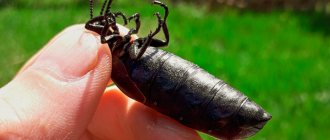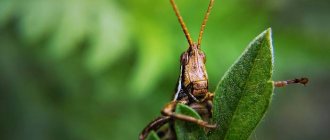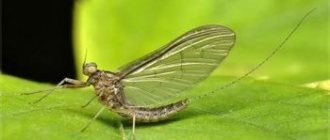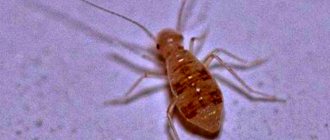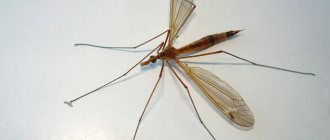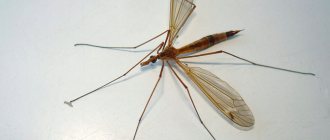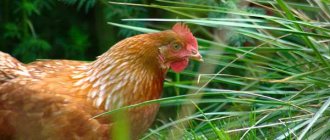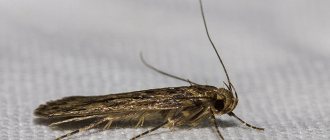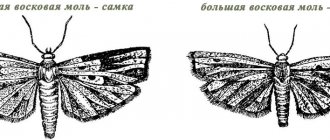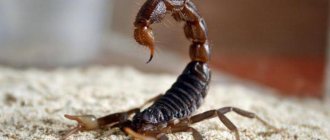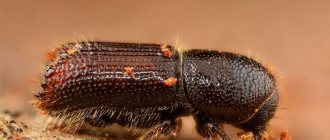Good day to all!
This article is not about a piece of clothing or even a plastic bag (although this is exactly the conclusion one could draw from reading the title), but about a beetle that I encountered in a village fifty kilometers away from the nearest regional center. Zhuque, whose full name sounds like an ordinary T-shirt (black) . This chance meeting slightly enriched my understanding of the world around me, which I would like to share with you.
Actually, voluntary self-isolation during the May holidays from civilization and its benefits (especially television and the Internet), allowed us not only to unload from the constant information stress that the media tries to crush us with every day, but also to spend time with the child in nature. And nature in the village is very close, just go out the gate and climb the nearest hill. On the hills, my daughter and I, as usual, caught green lizards and examined various beetles. Until we came across a very strange beetle, never seen before. So, welcome to one of the weekdays of an amateur entomologist)
What kind of insect is this?
This is a beetle that cannot fly. The insect lacks wings. The elytra are shortened, located close to the base, and slightly splayed to the sides at the back. The common beetle is a black or bluish-dark beetle; there are also almost azure-colored specimens. Regardless of color, the body of the beetle has a pronounced metallic tint. When you look at them, you get the impression that their body is made of metal and painted with enamel.
According to the entomological classification, they belong to arthropods, are representatives of Coleoptera and are part of the blister family.
Common beetle (photo)
Unfortunately, I didn’t have a lightbox and a camera with normal autofocus and capable of shooting macro at hand (as usual). Therefore, I took photographs with what I had - my Samsung J4 smartphone. The shooting process was further complicated by the fact that the ordinary T-shirt, despite its large dimensions and apparent clumsiness, turned out to be a rather nimble insect, unwilling to sit in one place even for a couple of seconds. All photographs were taken in motion, which also did not have a positive effect on the quality of the resulting photos.
I took a few shots by placing the insect on a piece of light corrugated cardboard. Fortunately, they turned out to be more or less contrasting and sharp, with sufficient detail for viewing the T-shirt beetle.
How big are these insects?
The Mike beetle, a photo of which you can see in the article, is very small. The length of its body varies from 15 to 40 millimeters.
Females are larger. They are easy to distinguish not only by their length, but also by the shape of their abdomen. In females it is extremely swollen, disproportionate to the body, large and protruding. Males are much neater and more aesthetically pleasing in appearance, but also smaller by at least a third.
Benefits and harms
Adult males feed on the green parts of plants; females do not cause much harm with their vital activity. The larvae are parasites. Some species are beneficial - they reduce the number of locusts and other crop pests. Others cause damage by destroying bee colonies.
The pest can be found on any plant, since these creatures are omnivores. They lead a diurnal lifestyle. They gnaw leaves, shoots, flowers. Beans, potatoes, mustard, turnips, and grain crops are destroyed in gardens.
Interesting!
In the past, medicinal preparations - diuretics - were prepared from blister beetles to increase potency. Canceled due to side effects. The drugs negatively affected the functioning of the liver, kidneys, and nervous system.
Blister beetle
The bites of the blister beetle are not dangerous to humans, but the substance that the insect secretes when it senses danger is poisonous. A burn, blister or abscess instantly appears on the skin. Special treatment of the bite is required using local antiallergic, antihistamine, and anti-inflammatory drugs.
Meeting blister beetles is dangerous for cats and dogs. If swallowed, intoxication develops. Kittens and puppies die without qualified help.
How long do these insects live?
The Mike beetle lives very little. Their entire life span is until reproduction. The male dies immediately after mating. The female dies after laying eggs.
The female of this insect manages to lay from a couple to ten thousand eggs. She lays eggs in peculiar nests. These are not particularly deep holes, going 25-30 millimeters into the soil. She makes the masonry in the form of a heap and sprinkles it with earth. The female of this beetle never starts arranging a new nest without making sure that the previous one is completely complete.
Blister Habitat
For a long time, the habitat of blister beetles was limited to the countries of Europe, Asia and Africa. Insects prefer open steppe and semi-desert areas, and due to their heat-loving nature, the bulk of these beetles are found in tropical and subtropical zones. At the moment, these bright bugs can be found on all continents except Antarctica.
Schiffer's blister.
Within Russia, different types of blister beetles live in the following areas of the country:
- South-Eastern regions;
- European part of the country;
- Southwestern and Eastern Siberia;
- Primorye;
- North Caucasus.
How do these insects live?
The Mike beetle cannot boast of an interesting lifestyle. Insects of this species feed on plants or the remains of other living organisms and can also lead a parasitic lifestyle. The larvae are released from the eggs 28-40 days after laying. The egg ripening time depends on the soil temperature. The higher it is, the faster a new generation of beetles appears.
At the larval stage, the Mike beetle likes to parasitize inside bee hives. Mikes in the larval stage have a tendency to travel. They crawl onto flowers, grasses, and shoots of bushes. They cling to bees and bumblebees, moving with them both to their hives and simply over considerable distances.
Interestingly, the Mike beetle does not die until mating. That is, finding itself alone, at a distance from its relatives, the insect lives for a longer time.
Blister lifestyle
Adults of most blister species feed exclusively on food of plant origin. Some representatives are aphages and do not need food at all. The diet of adults may include:
- leaves;
- young shoots;
- inflorescences;
- flower nectar.
The larvae are mostly parasites . Blisters most often lay their eggs near the home of a potential victim, which could be:
- bees;
- wasps;
- grasshoppers;
- locusts
Larval transport
Small blister beetles on a flower.
Thanks to its well-developed limbs, soon after birth the larva climbs up plant stems and waits for a suitable candidate. As soon as a potential “breadwinner” appears on the horizon, it quietly attaches itself to his body. The unsuspecting victim delivers the dangerous parasite directly to its nest, where the larva descends from its “transport” and begins to consume food. Her diet may include:
- oviposition;
- larvae;
- food supplies stored by adult insects for their offspring.
Are these insects dangerous?
Common mace is poisonous. At the slightest danger, the insect secretes an oily, viscous liquid. These secretions contain cantharidin, an organic non-protein poison.
In addition to T-shirts, carriers of this toxic substance are:
- barbel - red-breasted puffer, carpenter, Ussuri relict;
- Spanish fly;
- other beetles of the blister family.
On average, the insect body contains up to five percent pure cantharidin in its total biochemical composition. This substance is quite dangerous. When taken orally, a person requires 40 to 80 micrograms of pure cantharidin per kilogram of body weight to be fatal. This variation is explained by the varying degrees of susceptibility of the human body to the toxin.
The most famous types of blisters
The blister family includes more than 2000 species, but only about 100 of them can be found within Russia. The most common types are:
Horsefly
Both people and animals have encountered horse flies more than once.
These insects sting very painfully. Induration and redness remain at the site of the bite; in particularly sensitive people, the temperature sometimes rises. Perhaps someone will be consoled by the fact that only female horseflies bite and drink blood. By the way, they do this not out of malice or bad character - they need blood to lay eggs. Horseflies are carriers of dangerous diseases - anthrax, tularemia, filariasis and others. At first, few people worry, thinking that the ulcers at the site of the bite are an allergic reaction that will soon pass. In fact, this may be the beginning of an infection, and protective measures must be taken urgently.
To reduce the risk of infection, apply pressure to the bite site (this will reduce the spread of insect saliva), apply ice, wash and cauterize with iodine or alcohol. If redness and swelling do not go away, you should consult a doctor.
Small Khrushchak
The small flour beetle has a brown or red body color and causes considerable damage to the food supply of a person in an apartment. It is widespread in Russia and Ukraine, where it often causes spoilage of grain in granaries, mills and other places where bulk products are stored.
The red-brown beetle is smaller in size (up to 3.6 mm), but it loves to settle in various food supplies in the apartment: flour, nuts, dried fruits and other plant fruits.
The larva of the small beetle has a flat shape and a length of up to 7 mm, the body color is yellow-brown (light or dark shades), the head is flattened. The body is covered with hairs and ends with 2 spines. The pupa is painted light yellow, and its body is shiny and completely naked. The development cycle of the flying black beetle is 20-120 days, and the growth rate directly depends on the amount of food and living conditions.
Signs of a malaria mosquito bite
If a malaria mosquito bites, a person will not notice the difference and will perceive it as an attack by an ordinary bloodsucker. A slight tingling and redness of the skin accompanies the first hours after an attack by a dangerous malaria carrier. Then there is mild itching, blister and swelling. A photo of a malaria mosquito bite is shown below.
You can distinguish a malaria mosquito from a regular one by external, barely noticeable signs. Anopheles raises its abdomen during a bite, and a simple mosquito holds it parallel to the surface. The antennae of the malarial bloodsucker are longer than those of the common one. Both types of insects are almost the same in size.
The bite site may not make itself felt after a couple of days, and the victim will not suspect anything. The incubation period for malaria can last from 7 to 45 days from the moment of the bite. Before obvious signs of the disease appear, a person may experience the following ailments in the first week after being bitten by a malaria mosquito:
- weakness;
- apathy;
- pale skin;
- lack of appetite;
- nausea;
- pain in the abdomen;
- diarrhea;
- vomit.
The victim of a malarial bloodsucker rarely pays attention to these signs, finding another explanation for them. At this time, the disease is already developing in the body and causes a destructive effect on the internal organs.
To make you feel better, you should immediately treat the mosquito bite with an alcohol solution and apply ice. The patient is advised to drink plenty of fluids: strong tea and coffee. To prevent an allergic reaction to mosquito bites, you should take an antihistamine - Suprastin, Tavegil, Diphenhydramine.
Box Jellyfish (Box Jellyfish)
The creatures most likely to be encountered are on the west coast of Australia and the Philippines, where dozens of jellyfish-related deaths are reported each year, and cases have also been reported in Japan, Thailand, Malaysia and even Galveston Island in the Gulf of Mexico.
What makes this jellyfish so dangerous? The numerous tentacles of this seemingly ordinary jellyfish are lined with thousands of nematocysts, which are searing cells filled with powerful toxins that almost instantly paralyze the heart and nervous system.
There is an antidote for these toxins, but in most cases the victims become numb, drown, or die of heart failure on the way to the hospital. Rare survivors have reported suffering severe pain for weeks after contact with the jellyfish, resulting in scarring that lasted a lifetime.
Mosquitoes
See also Mosquitoes, video of a mosquito drinking blood
More than 1000 species of mosquitoes are known. The habitat extends north to the 50th parallel. The most noticeable difference between maskites and mosquitoes is their brown-gray or yellow coloration. They carry a wide range of different diseases, including leishmaniasis. They fly to prey at a distance of up to 1.5 km. In populated areas they live in burrows of house rodents, under floors, in basements.
To breed, mosquitoes need shallow bodies of water with standing warm water: for example, a puddle or a tin can. Female mosquitoes drink blood.
Most species attack humans at night; especially active immediately after sunset and shortly before sunrise. If the weather is cloudy, mosquitoes also attack during the day. They rarely limit themselves to one “meal.”
Insects do not bite through thick fabric such as soldier's cloth. A thin shirt will only protect in those places where it does not touch the body.
Radical protection against mosquitoes and mosquitoes includes the following:
- Drainage of puddles, swampy areas, standing water reservoirs;
- Spraying insecticides in rooms where insects hibernate: basements, attics;
- “Oiling” of water bodies: spills of kerosene or other low-volatile petroleum products that form a film in the water that prevents mosquito larvae from breathing;
- Use repellents. The drug can be used to impregnate clothes and bed nets. It lasts from 3 to 8 hours - depending on the type of repellent, against insects and on the weather.
Please note that repellents may damage plastic and synthetic fabrics.
LiveInternetLiveInternet
T-shirt and I met in my sister’s garden.
Mike is from the blister family. Beetles of this family are distinguished by soft covers; their elytra are also soft and do not fit tightly to the abdomen. The claws are split, so it appears that there are four of them on each leg.
The beetle looked quite intimidating, but not aggressive.
The T-shirts themselves are quite large bugs. There are two varieties: a variegated T-shirt (green with a metallic tint and a purple-red border on the head and chest, up to 35 mm long) and an ordinary T-shirt (black with a bluish tint, up to 25 mm long) - in the photo. The body is fleshy, in females it has a strongly swollen abdomen, which is only partially covered by elytra.
After transferring him to the bench, I started the photo shoot 
And it’s convenient for me - it’s easier to “catch” the animal through the lens, and the animal is relatively safe - it won’t accidentally get crushed.
At first I thought that the beetle was in the growing stage - some kind of childish wings 
In the spring, female beetles lay eggs (up to four thousand) in the ground or on its surface. Hatched triungulin larvae are very mobile, up to 2 mm long. They climb into flowers (various plants, but more often - representatives of the cabbage, aster, and legume families), “hiding” in anticipation of insects flying in for nectar. The motley larva rushes at the insect, digs its head into the body of the bee - in this position it is difficult to notice and, once in the nest, molts and feeds on honey in the cells. Larvae pierced into a bee cause severe convulsions in the latter, and often even the death of domestic bees. The ground near the hives, if the colonies are heavily infested with variegated larvae, is covered with a large number of crawling and dying bees.
As it turned out, this is already quite an adult person, but in principle he cannot fly and does not want to - such a “project” 
Adult beetles cannot fly, so the “mission” of settling over long distances and to new areas is entrusted to the larvae.
And his mustache caught my attention - multi-colored and quite cute.
Despite my sister’s protests, I still risked picking up the T-shirt, but was immediately marked with hemolymph (that is, the blood of a beetle, one might say). I was surprised that liquid came out from the insect’s legs - as if through the joints.
In the body of T-shirts, especially in the hemolymph, which performs the function of blood in insects, there is a toxic substance cantharidin. In case of danger, the beetle secretes droplets of hemolymph through the holes on its legs: the poison gives the beetles an unpleasant odor and a nasty taste. When poison gets on human skin, dermatitis forms and large blisters appear. The presence of wounds and scratches enhances the effect of the poison. Ingestion of poison is fraught with serious consequences - respiratory and cardiac dysfunction, as well as painful urination, may occur.
There is only one recommendation: do not pick up beetles, do not crush them, and conduct explanatory conversations with children.
I didn’t really like this and the beetle was released - that is, the goal of releasing the liquid was achieved.
The larvae of the common bee do not invade the body of the bee, but, settling on the body in numbers from 5 to 15 copies, they greatly disturb the bee and exhaust it, which also leads to the death of the striped worker.
And the ordinary T-shirt, contentedly, quickly ran away! Alas, we never saw each other again (I immediately washed my hands thoroughly at the insistence of my sister and, as it turned out, not in vain)
Alas, we never saw each other again (I immediately washed my hands thoroughly at the insistence of my sister and, as it turned out, not in vain)
Source
